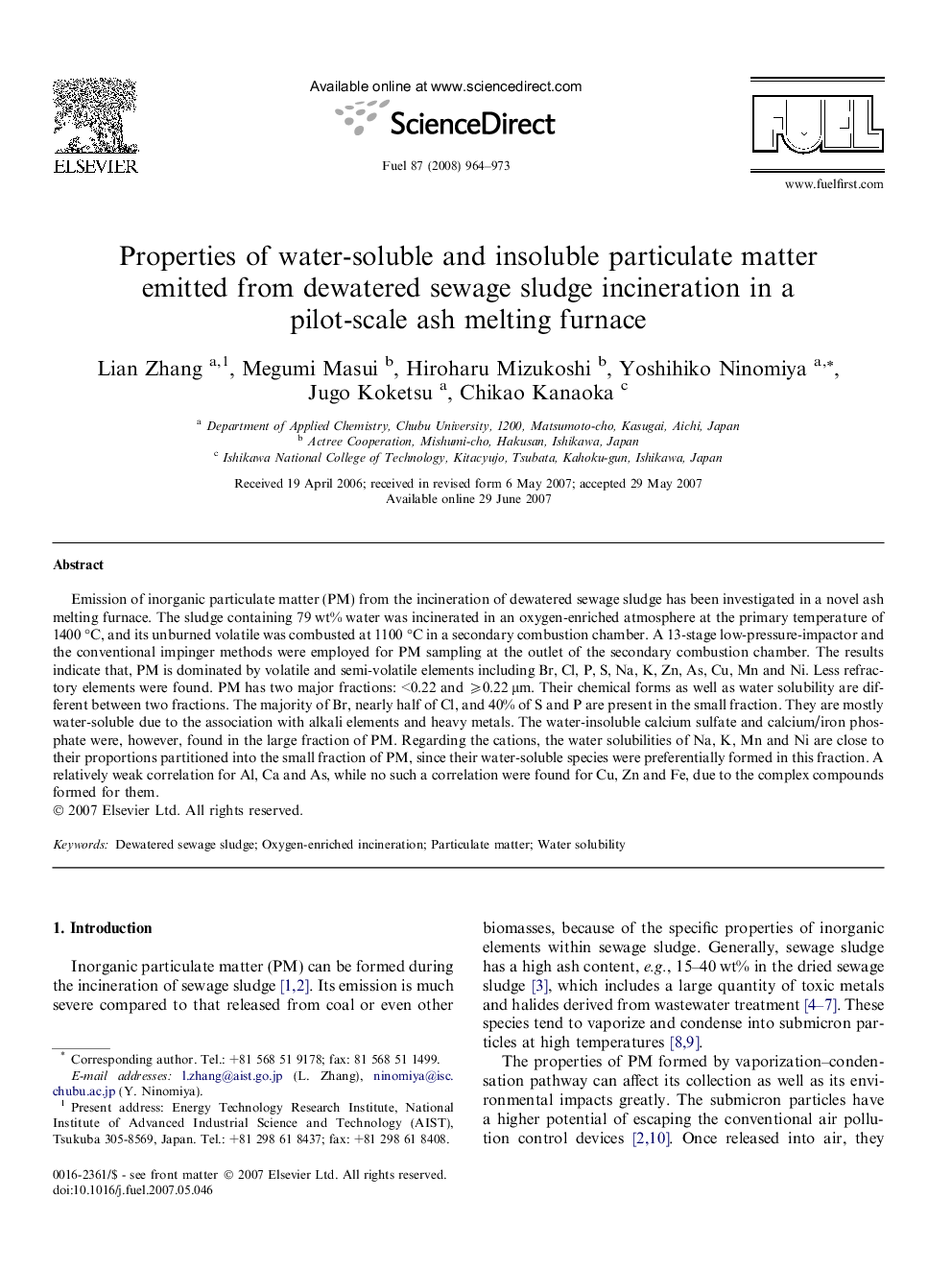| Article ID | Journal | Published Year | Pages | File Type |
|---|---|---|---|---|
| 207775 | Fuel | 2008 | 10 Pages |
Emission of inorganic particulate matter (PM) from the incineration of dewatered sewage sludge has been investigated in a novel ash melting furnace. The sludge containing 79 wt% water was incinerated in an oxygen-enriched atmosphere at the primary temperature of 1400 °C, and its unburned volatile was combusted at 1100 °C in a secondary combustion chamber. A 13-stage low-pressure-impactor and the conventional impinger methods were employed for PM sampling at the outlet of the secondary combustion chamber. The results indicate that, PM is dominated by volatile and semi-volatile elements including Br, Cl, P, S, Na, K, Zn, As, Cu, Mn and Ni. Less refractory elements were found. PM has two major fractions: <0.22 and ⩾0.22 μm. Their chemical forms as well as water solubility are different between two fractions. The majority of Br, nearly half of Cl, and 40% of S and P are present in the small fraction. They are mostly water-soluble due to the association with alkali elements and heavy metals. The water-insoluble calcium sulfate and calcium/iron phosphate were, however, found in the large fraction of PM. Regarding the cations, the water solubilities of Na, K, Mn and Ni are close to their proportions partitioned into the small fraction of PM, since their water-soluble species were preferentially formed in this fraction. A relatively weak correlation for Al, Ca and As, while no such a correlation were found for Cu, Zn and Fe, due to the complex compounds formed for them.
